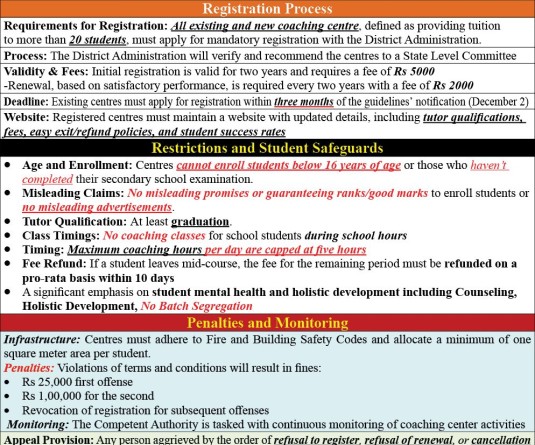
Temjenkaba (DIPR feature)
Kohima | October 24
Naga society has suffered the vicissitudes brought about by the decades of conflict. One of the most pronounced casualties has been the destruction of trust and goodwill. If one takes these observations seriously, working for peace is the most important task and the need of the hour. This is so, because of the common search for peace today that administrators, teachers and students have to draw inspiration and hope in Gandhi who is the model of peace in the 21st century that. Gandhi observed that, peace is rooted in love of God or love of truth. Gandhi said ‘my greatest weapon is mute prayer’. The cause of peace is therefore, in God’s good hands. When one talks about promoting nonviolence in the Gandhian sense, it has a strong religious foundation. Peace is the only way and hope for a shared humanity in the 21st century.
Gandhi’s understanding of truth, nonviolence, love and human interdependence serve as indispensable resources in the struggle for peace in the world. The purpose of education is to form nonviolent holistic personalities and help develop capacities of self-independence and cooperation. A Gandhian analysis added. ‘If we don’t teach our children peace, someone else will teach them violence. Being a true student today means striving to be a peace-student; peace is the only way and hope for securing a shared humanity in the 21st century.” Gandhi said “There is no way to peace, but peace is the only way.”
This shared consciousness for peace is neither a sentimental slogan nor a fashionable political programme. But it is based on a conscious, genuine and systematic effort to infuse the values of nonviolence and peace all over the world. In one’s struggle to chart a future based on the value of peace, a Gandhian understanding of truth, nonviolence, love and human interdependence can help in explaining the violent situations as well as to develop a nonviolent alternative. In Gandhi’s understanding, truth, nonviolence, love and human interdependence cannot be separated.
Gandhi speaks of nonviolence as satyagraha, literally, holding onto truth or being. Satyagraha is the nonviolent search for truth which Gandhi calls the most powerful force in the universe. According to Gandhi, violence has no religion. Nonviolence is mightier than the mightiest weapon of destruction devised by the ingenuity of human beings. Therefore, ahimsa is not passive resistance, as many understand it to be, but it is a conscious decision to do no harm to anyone. In fact, for Gandhi, nonviolence is not for cowards but for those who are brave. We need to note that truth and nonviolence are inseparable. As Gandhi himself explains, Ahimsa is not the goal, but added that truth is the goal. So there’s no means of realizing truth in human relationships except through the practice of ahimsa. So understanding of truth and ahimsa is directly linked to his view of human being interdependence. Humanity is indivisible and every human being is responsible to and for others. Gandhi states that “Since human beings were are interdependent, the good society should discourage all forms of exploitation, domination, injustice and inequality, which necessarily coarsen human sensibilities… and find ways of institutionalizing and nurturing the spirit of love, truthfulness, social service, cooperation and solidarity. In other words, cooperation and interdependence is the manifestation of nonviolence.
For Gandhi, love of God and love of the opponent is the elements that bind truth, nonviolence, and human interdependence. Pursuit of nonviolence is not possible without charity or love. This love is about the feeling of the opponent. Does today’s education promote values of truth, nonviolence, love and human interdependence? As one lives in a world where there is very little room for pursuing and securing truth. There is no need to mention that the society and human relationships are conditioned by hatred, mistrust and divisions, instead of love and respect. Valued of human interdependence and cooperation has been swallowed up by search for individual security and competition in the society. One cannot talk about peace without truth….protection of being, good; against all forms of falsehood, peace loves our enemies.
Gandhi recognized the relationship between peace and education. We cannot promote peace unless we socialize and educate children in the values of peace. According to Gandhi, “if we are to teach real peace in this world, and if we are to carry on a real war against war, we shall have to begin with our children. This means that peace-oriented behaviors and attitudes can be institutionalized, learned and infused in the schools and colleges. Gandhi advocates that education is a highly moral activity and its purpose is to form nonviolent holistic persons, rather than concentrating on one aspect. From Gandhi’s nonviolent perspective education should develop capacities of self-independence, love, truthfulness, social service, cooperation and solidarity. Education should promote the centrality of work as well as productive Manual labor, to focus on real needs and simple living, and the development of nonviolent.
Gandhian analysis of the modern educational system would mean that the system is a huge producer of violence. Many would not think that schools-colleges and classroom teaching as violent, but Gandhi argued that normal school and college education are very violent because of so many reasons. First, modern education has increasingly become commoditized, corporative, individualistic and socially irresponsible in many ways. One sees education of children as something that is worth investing; a college degree as a means for securing a job, economic security, and social standing rather than viewing it as a tool for social transformation. Education is an end that one wants to use for competing, controlling and exploiting other human beings and of nature. The educational system may promote egoistic desires, attachments, selfishness, and aggressive and violent relations. It may also pay a little attention to development of care, love, compassion, selfless service, and other forms of peace and nonviolence. Therefore, from a Gandhian perspective, an education system that produces fierce completion, anxiety, selfishness is a violent method that produces failed experiments in truth. Other examples include: sexual violence, racial violence.
One effective means for countering violence in schools and colleges is to teach live and peace. Peace is in one’s hands, it just takes education. By teaching peace, one can work to counter the violence, spark the conscience, and liberate the thinking of the mind and by ignoring and forgetting to teach peace, violence is being promoted. This is why peace education matters a lot.
In 1942, Gandhi gave the following talk to a group of teachers and students: ‘A teacher, who establishes rapport with the taught, becomes one with them, and learns more from them than he teaches them. He who learns nothing from his disciples is, in my opinion, worthless. I take from him more than I give him. In this way, a true teacher regards himself as a student of his students. If you will teach your pupils with this attitude, you will benefit much from them.’
Being a true student today means striving to be a peace-student, so what does it mean to be a peace student? It means that one can be a Gandhian student in Nagaland if he resolves not to promote any form of violence. It means not getting involved in promoting hatred of other tribes or races. It also means deciding not to abuse others. It also means de-conditioning ego-driven selfishness and greed. It means replacing fear, aggression, and other violent intentions with nonviolent behavior and relationships.
Sources: Dr. Pangernungba
Lecturer at CTC





